OCTOBER PRESENTS PROTEIN FROM COFFEE, A GAME OF THRONES PREQUEL AND THE NY BOTANICAL GARDEN REVEALS PLANS FOR A YAYOI KUSAMA 250 ACRE EXHIBITION!
FOOD
Happy Family Organics' new campaign reassures parents that ‘messy’ is normal & can be joyful
Content Courtesy of: foodnavigator-usa.com
Written by:

Recognizing people increasingly value authenticity and meaningful relationships over material possessions or a façade of perfection, Happy Family Organics unapologetically shows – and prizes – the messy, chaotic process of parenting in a new marketing campaign that sharply contrasts with traditional highly-staged ads that may set an unrealistic bar for the ‘right’ way to raise children.
“The organic baby food company’s ‘Happiness Wins’ campaign that debuted earlier this month features real, unscripted parenting moments, including messy mealtimes, delayed departures and bedtime struggles. But rather than concentrating on frazzled parents, each scene focuses on the children’s joy and in doing so strives to reinforce the brand’s ethos that children’s health and happiness are greater than everything.
“As a brand, we have always taken a positive and celebratory view on parenting,” and “as parents ourselves, we saw an even greater opportunity to champion happiness above all, especially in today’s busy and uncertain times, when parents are under pressure and bombarded by the 24-hour new cycle,” said Erica Messina, VP of marketing & ecommerce at Happy Family Organics.
To do this, she explained to FoodNavigator-USA, the brand “deliberately set out to differentiate these videos from what we traditionally see in the CPG space,” which tend “to feature babies in situations by staging, casting and studio production. We wanted to strip away things that can be distracting and really focus in on real, natural parenting moments.”
Real-life campaign reflects changes in how consumers engage with brands
But to uncover those ‘real’ moments, Happy Family Organic’s needed a different approach that included real families – either company employees or friends – and no actors, she said.
“To ensure that we captured these raw reactions from the kids, we knew that we couldn’t show up with a 20-person production crew, so we rigged cameras and hid them in objects and toys … so the children never saw a camera or a crew member,” Messina explained, adding that the cameras were operated by the parents.
The result is a series of short videos and ads that not only are relatable, but also tap into a broader cultural shift that is changing how consumers relate to brands by redefining a ‘good life’ as one with filled with meaningful relationships rather than material positions, said Messina.
For support, she pointed to research commissioned by Happy Family Organics that found 95% of parents believe that ‘achieving overall happiness despite life’s challenges’ is most important to living a good life.
“This sentiment is reflected in both the way we celebrate and capture happiness in our videos using authentic parenting moments from real families, and in the message that we want parents to come away with – that it’s easy to be bogged down in the stresses and pressures of life, but at the end of the day a happy child is greater than everything,” she said.
And while the company fully believes that a happy, healthy child is more important than those chaotic mornings when nothing seems to go as planned, Messina notes that Happy Family Organics also strives to help parents be happier by providing “convenient organic, nutritious meals and snacks that parents can feel confident feeding their little ones.”
These include the brand’s Happy Tot Super Mornings breakfast blends and Happy Baby Clearly Crafted line of pouches and jars made with “organic ingredients traceable to the farm where they were grown,” Messina said.
More than a CPG marketer
Happy Family Organics’ also is using the campaign to fuel social change and meet parents’ expectations that “companies go beyond providing quality products and services by using profits to drive positive change in the world,” Messina said.
She explained that the campaign encourages parents to share candid moments on social media with the hashtag #HappinessWinsChallenge and tagging @HappyFamilyOrganics. For each post, the company commits to donate $1 (up to $25,000) to the non-profit SPOON, which helps provide proper nutrition to children in US Foster Care and orphanages worldwide, Messina said.
Beyond this, she said, Happy Family also offers personal support to caregivers through its free live-chat service on its website, which connects parents to company nutritionists and lactation specialists, she added.
“We know that feeding can be confusing and stressful,” and to date “we have helped over 30,000 parents with anything from low breast milk supply to meal planning for picky toddlers,” she said.
She added the company also uses its scale to “create pathways for happiness that go beyond the nutritious food we offer – from donating millions of meals to families in need and offering our premium products through federal aid programs to partnering with sustainability leaders like Renew Oceans to convert ocean plastics into energy in developing countries.”
[Editor's Note: Want to learn more about how brands are approaching children's food and marketing to parents? Join us next month in Chicago for FoodNavigator-USA's Food For Kids Summit. Check out all the details and register today.]
Content Courtesy of: foodnavigator-usa.com
Written by: Mary Ellen Shoup
Protein from coffee? Applied Food Sciences introduces CoffeeProtein to plant-based protein market

Applied Food Sciences has launched CoffeeProtein, which the company says offers clear sensory and consumer-friendly advantages over the rest of the plant-based protein competition
Applied Food Sciences (AFS) specializes in functional ingredients from botanical extracts and has been working in coffee extraction since 2001.
Coffee and its various compounds (e.g. caffeine, antioxidants) and possible product applications (coffee flour , coffee fruit 'cascara' beverages) have made it a popular ingredient for the food and beverage industry.
"Everybody has organic coffee extract. In fact, green coffee extract is one of the most commoditized extracts around, but very few people have started to dabble in the other extracts that are found in coffee," Brian Zapp, director of marketing at Applied Food Sciences (AFS), told FoodNavigator-USA.
"We’ve decided to look at this plant-based protein side of the story and found that coffee beans are a decent source of protein (30% caffeine-free protein)."
This discovery led to the development and launch of the company's CoffeeProtein ingredient launched at SupplySide West show in Las Vegas earlier this month.
Protein from coffee' has trustworthy appeal
AFS believes that consumers' familiarity will work in favor of CoffeeProtein despite it having a lower protein content compared to other protein sources.
"We thought opposed to these lupin and more obscure pea proteins, that consumer familiarity with coffee would be a really strong element with this product," said Zapp.
CoffeeProtein is a 'whole food protein' (as opposed to an isolate) meaning it provides other phytonutrients such as antioxidants and fiber and a 30% caffeine-free protein content.
"It’s not the highest in the world, but we think the familiarity will encourage application," Zapp noted.
Excellent sensory profile
Added protein is showing up in all sorts of products from RTD beverages such as cold brew coffees and draft lattes to crackers, cookies, and gummies, noted AFS. In fact, the number of global food and beverage launches featuring protein grew by +26% CAGR between 20145 and 2018, according to Innova Market Insights.
One of the obvious applications for CoffeeProtein the company foresees is in protein fortified coffee beverages, according to Zapp.
In our opinion, coffee protein for coffee products, it’s just one of the immediate, low hanging fruits," he said.
However, Zapp noted that while the market is "jam-packed" with protein products, there's a growing interest in more moderate amounts of added protein, which tend to taste better, Zapp said.
"Where a lot of product development is headed is in fortifying more than usual servings of protein in everything, but anything that’s jam packed with protein usually leaves little to be desired with taste. It’s just kind of this chalky, unfulfilling experience," he said.
CoffeeProtein, on the other hand, has a favorable sensory profile compared to many other plant-based protein sources, according to Zapp.
"Plant proteins in general tend to be bitter, have a lot of astringency, and that’s one of the rubs of working with botanical ingredients. When you break down the coffee as naturally as you can to just the actives, it’s really not bitter, it profiled mores like a nut protein. Instead of gritty mouthfeel, it’s very smooth and creamy," said Zapp.
"Just hearing ‘coffee protein’, sounds delicious."
Sustainability and transparency story
AFS is vertically integrated and has its hands on every step of sourcing. The company sources all of its coffee from southern India where AFS enforces strict criteria for its partner companies such as a fair living wage and proper safety training for coffee farmers, and regenerative agricultural practices.
"The bar keeps raising as far as what our standards are in terms of ethical and sustainable sourcing," said Zapp.
ART
NEWS Getty Center Closes for the Week as Wildfires Scorch California—Other Art Museums Take Precautions
Content Courtesy of: artnews.com
Written by:

Firefighters look at the Getty Fire spreading in the hills behind the Getty Center in Los Angeles, California.
ETIENNE LAURENT/EPA-EFE/SHUTTERSTOCK
As wildfires rage throughout Northern and Southern California, several museums across the state have been forced to close. A conflagration known as the Getty Fire, which started early Tuesday morning along the 405 Freeway in Los Angeles, has caused the Getty Center and the Getty Villa to remain closed through the week.
In a statement to ARTnews, a museum representative said that, while the Getty Center is secure, “our property is still serving as a hub for emergency responders and there are forecasts for high winds and another red flag warning tonight through Thursday morning. After careful consideration, we have made a decision to close both the Getty Center and Getty Villa through Friday. We do so out of an abundance of caution related to the weather conditions, to allow space for continued movement of fire equipment, and because road closures would make it difficult for visitors and staff to come to either facility.”
The Getty shuttered to “accommodate the fire-fighting effort and make space for emergency responders on Getty roads,” according to a statement. The museum has said on Twitter that the artworks in its collection are safe and “protected by state-of-the-art technology.”
Over 1,000 firefighters were on the scene at the Getty Fire on Monday, and the Getty, which is normally closed on Mondays, was also closed to employees yesterday. On Tuesday, the Getty Fire had burned 656 acres.
Cultural institutions in Sonoma County, north of San Francisco, also closed to the public on Tuesday due to the Kincade Fire, spanning over 75,000 acres and threatening some 90,000 structures. The Charles M. Schulz Museum is closed, but plans to reopen on Wednesday, October 30. The Museum of Sonoma County also closed Tuesday and will remain closed Wednesday; pending weather conditions, the museum may reopen on Thursday.
Jeff Nathanson, the executive director and curator at the Museum of Sonoma County, told ARTnews that the majority of the museum’s staff have been evacuated from their homes. He said that because the museum is located in downtown Santa Rosa, its structure and collection are not imminently threatened by the fire. Air quality within the museums walls is, however, a concern.
“The air quality inside our building is not as bad as outside, but it’s not good or safe,” Nathanson said, adding that a contractor is setting up air purifiers throughout the museum today. “By this evening we expect [the air in the museum] to be completely clean.”
Artworks in the collection will be checked following air purification procedures.
“We’re going to have to go through a complete inspection of our exhibition galleries and our collection,” Nathanson said of works that may require cleaning.
The Museum of Sonoma County was also impacted by fires in Northern California in 2017, when, according to Nathanson, the museum staff more seriously considered evacuating objects in its collection. During those fires two years ago, the institution opened its doors as a sanctuary space for community members affected by the disaster. If the museum reopens on Thursday, it will serve this purpose once again.
Since 2017, the museum has organized a symposium on fire safety and evacuations attended by multiple institutions in the region. As a result, “we feel more prepared than we were two years ago,” Nathanson said.
“Cultural institutions, especially museums, have to be part of a community recovering— being resilient and processing what impact these disasters have,” he said.
Yayoi Kusama Will Fill New York Botanical Garden with Infinity Room, ‘Dancing Pumpkin,’ and Much More
Content Courtesy of: artnews.com
Written by:
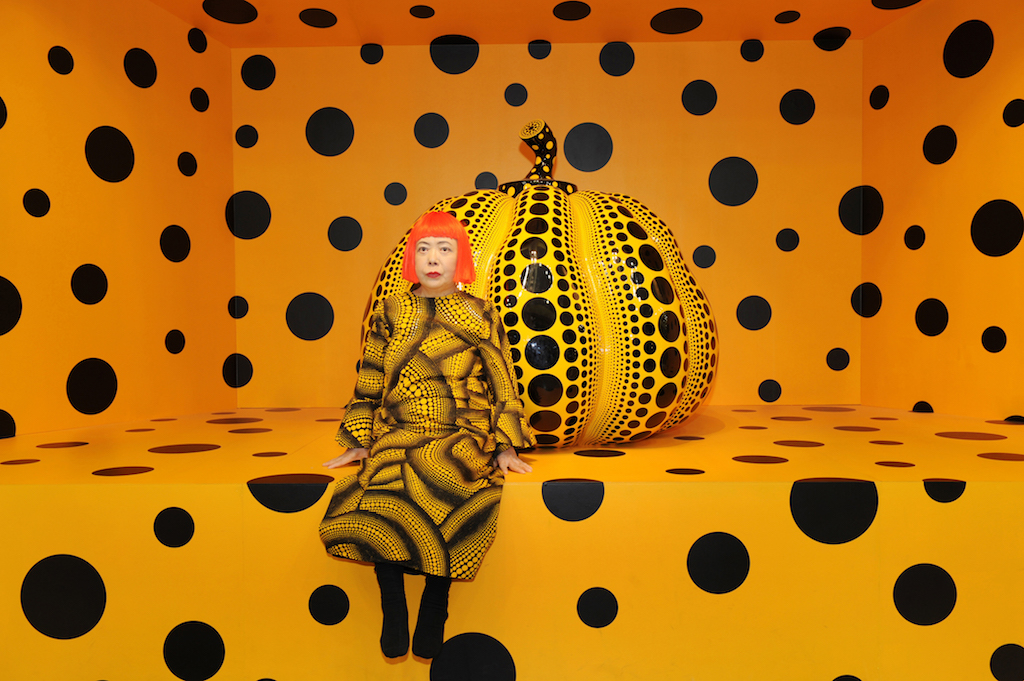
Yayoi Kusama with Pumpkin, 2010.
© YAYOI KUSAMA/COURTESY OTA FINE ARTS, TOKYO/SINGAPORE/SHANGHAI, VICTORIA MIRO, LONDON, AND DAVID ZWIRNER, NEW YORK
ARTnews is sounding the “Infinity Watch” alarms for the fourth time this month: the New York Botanical Garden in the Bronx has revealed details about its sprawling Yayoi Kusama exhibition, which will spread across the institution’s 250 acres next spring.
Slated to open May 9, the show, titled “Kusama: Cosmic Nature,” will focus on the artist’s longstanding exploration of nature, which goes back to her childhood in Japan, where her family owned a flower nursery. The exhibition will feature works from throughout Kusama’s seven-decade career from sketches of flowers she made at 16 to new pieces debuting in this survey.
On deck at the Botanical Garden are a potpourri of polka-dotted sculptures of flowers, paintings, and installations, including one of the artist’s famed “Infinity Mirror Rooms” and a greenhouse-themed “Obliteration Room,” where visitors are asked to cover the entire space with specially designed floral stickers.
The newest piece in the exhibition is a monumental bronze sculpture, titled Dancing Pumpkin (2020), that will allow viewers to approach the work from multiple angles, including having them walk under and around it. In an interview with ARTnews, Karen Daubmann, the NYBG’s associate vice president for exhibitions and public engagement, described the over 16-foot-tall work, which will be installed outdoors, as “a cross between a spider and a pumpkin.”
Kusama once described “the sense of being obliterated by flowers” as a child in a field near her home in Matsumoto, in Japan’s Nagano prefecture—an indelible event that likely influenced numerous aspects of her art-making, from her frenzied depictions of flora to her obliterating, immersive environments themselves.
“The more we researched her, the more we got excited about these stories we could tell here at the garden,” Daubmann said. “We’re writing a story about Kusama that most people don’t know.”
This will be just the third chance that New Yorkers will be able to see work by Kusama in the Big Apple in the span of a year. A solo exhibition of new work, expected to bring 100,000 visitors, opens next month at David Zwirner in Chelsea and a balloon designed by the artist will soar above Manhattan as part of this year’s Macy’s Thanksgiving Day Parade. “Cosmic Nature” will remain on view at the New York Botanical Garden through November 1, 2020, allowing visitors to experience Kusama’s works through multiple seasons. Tickets for the exhibition go on sale January 29.
FASHION
How Sustainable Is Renting Your Clothes, Really?
Content Courtesy of: marieclaire.com
Written by: Elizabeth Cline
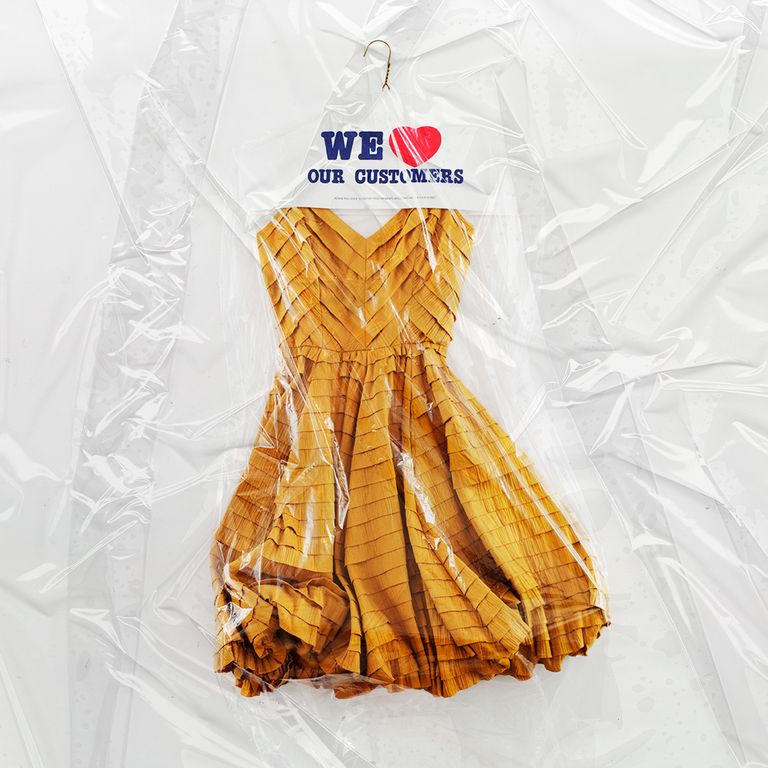
For the millions of converts to clothing rental platforms like Rent the Runway, Le Tote and Gwynnie Bee, trying out the latest trends without destroying the planet is a big part of the allure. I recently leased a gold sequin skirt and a ruffled red dress for date night—the kind of wear-it-once styles documented on Instagram and then tossed out—without any of the guilt I feel when buying fast fashion, which is notorious for its water pollution, labor abuses and textile waste.
Over the summer, Urban Outfitters, Macy’s, Banana Republic, American Eagle, and Bloomingdale’s announced their own rental subscription services, which industry analysts clocked as a bid to appeal to conscious consumers. And in a sign of just how lucrative renting clothes has become, Le Tote is set to acquire former retail giant Lord & Taylor. But as rental fashion becomes big business, it’s worth asking: Just how sustainable is constantly borrowing clothes?
The short answer, according to the half-dozen sustainability experts I spoke to for this story, is that we don’t exactly know. Despite some rental platforms advertising themselves as inherently green, there has yet to be an in-depth environmental study of their operations. And yet experts have spotted a number of environmental pitfalls in the business model, from the proliferation of energy-consuming dry cleaning facilities to carbon-spewing deliveries and returns.
Consider the Returns
Every sequin skirt borrowed must be returned, which means the shipping impact of leasing your wardrobe could be neck-and-neck with that of a fast fashion shopper. Transportation is now the top source of carbon dioxide emissions in the United States, and online shopping is partly to blame. A quarter of this footprint comes from trucks doing “last-mile deliveries,” taking packages ordered online from a warehouse to your front door. And second only to manufacturing our clothes, consumer transportation has the largest footprint of our fashion habit, according to some studies.
There are ways to whittle emissions out of delivery routes, including putting warehouses closer to renters and grouping returns together (or buying a fleet of electric trucks, a la Amazon). But for now “the returns and transportation activities just of moving all these clothes will definitely be higher than just regular delivery of fast fashion clothing,” says Josué Velázquez-Martínez, the executive director of MIT’s Supply Chain Management master’s program and Sustainable Logistics Initiative.
According to his rough estimates, an item ordered online and then returned can emit 20 kilograms (44 pounds) of carbon each way, and spirals up to 50 kilograms for rush shipping. By comparison, the carbon impact of a pair of jeans purchased outright (presumably from a brick and mortar store) and washed and worn at home is 33.4 kilograms, according to a 2015 study commissioned by Levi’s.
Most rental services ship in cardboard boxes, which have a shockingly low recycling rate.
What’s more, borrowed clothes often come wrapped up like new, contributing to packaging waste. Most rental services ship in cardboard boxes, which have a shockingly low recycling rate and require energy and water when they are. Then there’s the tissue paper that isn’t recyclable. Plus returns are sent back in a plastic bag. Rent the Runway is doing a better job than many competitors on the packaging front, shipping in custom reusable garment bags and hangers, though every item inside is wrapped in a plastic dry cleaning bag. The company recycles these for its customers, but, as Velázquez-Martínez points out, not all plastic is utilized in the recycling progress.
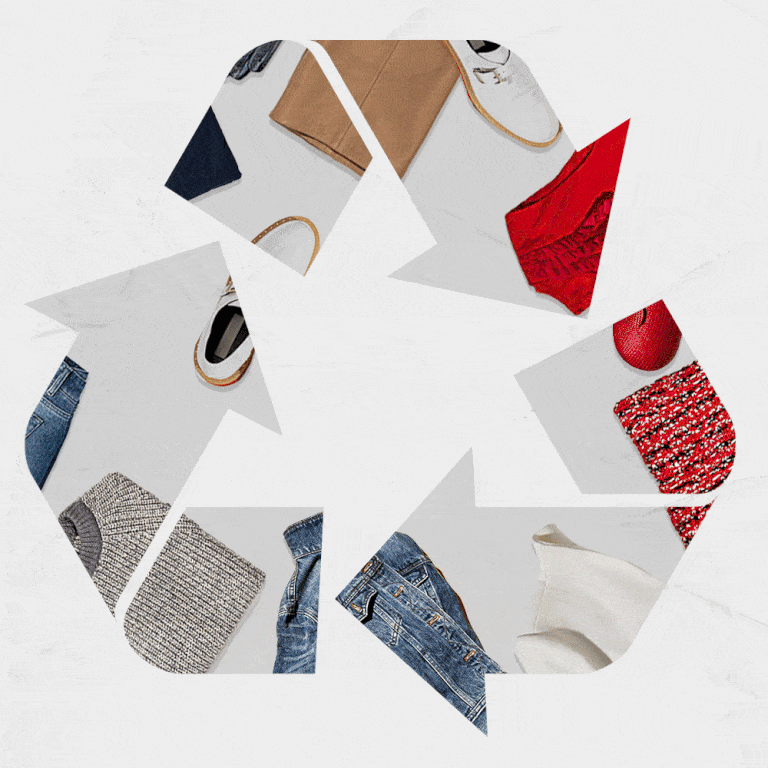
What About the Dry Cleaning?
For avid renters, free laundry is one of the perks. Rent the Runway often boasts that it’s the nation’s largest dry cleaner, and the company opened a second, 300,000-square-foot facility in Arlington, Texas last July. But the way we clean our clothes has a major environmental impact, even at home: Americans emit 40 million metric tons of carbon dioxide equivalents each year in high-heat tumble dryers, about the same amount of carbon emitted by e-commerce giant Amazon.
While we don’t know the aggregate effect of the dry cleaning industry, we do know that dry cleaning requires more energy than our own laundry rooms, and that industrial dry cleaning facilities are packed with all sorts of energy-consuming equipment, from steamers and pressers to temperature-controlled storage. Rented outfits might be washed regardless of whether or not they’ve been worn, and services like Rent the Runway have the power to tip our fashion choices towards fussy, dry-clean-only items we would avoid if we were washing them ourselves.
All of the major rental services deserve credit for avoiding perchloroethylene, a dry cleaning solvent that’s carcinogenic, classified as a toxic air pollutant by the EPA, and still used by 70% of the nation’s dry cleaners, according Steve Whittaker, a toxicologist with the Seattle-based Hazardous Waste Management Program. But Whittaker is also quick to note that the hydrocarbon alternatives (also called “petroleum-based” solvents) used by most rental platforms are not exactly green. They can produce hazardous waste and air pollution if not handled correctly, and they’re often paired with stain removers that are more toxic than the solvents themselves. “There is no such thing as non-hazardous dry cleaning,” he says.
Rentable fashion contains the environmental risk that it will increase our appetite for clothes.
There is no evidence that hydrocarbon solvents are harmful to renters or that they remain on our borrowed outfits at harmful amounts. Still, Whittaker says that the far more sustainable option is “wet cleaning,” essentially a souped-up version of home laundering that uses gentle soaps and water and is safe for most dry-clean-only clothes. Le Tote is the one rental company that confirmed it uses wet cleaning for 80 percent of its inventory, and mostly relies on biodegradable detergents. “Whenever we can avoid dry cleaning, we avoid it,” says Reshma Russell, the company’s director of quality assurance and process improvement. The wet cleaning process, the company claims, also uses less water and electricity than our own machines.
The Light at the Bottom of the Reusable Bag
As someone who has reported on the devastating impacts of fast fashion, I remain convinced that renting is a step in the right direction, and an urgently needed one. Most of the researchers I spoke to agree. Velázquez-Martínez says that he thinks that even the most avid renter is greener than a fast fashion shopper. (He is having his students study the impacts of leasing fashion this semester, which may tell us conclusively.)
The reason for my confidence? Fashion’s biggest environmental crime lies in overproduction. Of the 3.3 billion tons of CO2 equivalents generated by the apparel industry every year, the majority are emitted while making more clothes, clothes that mostly end up in landfills long before their useful lives are over. Reducing the impact of industry is the most challenging part of tackling climate change; sharing clothes through rental platforms presents a simple and obvious solution.
Fashion’s biggest environmental crime lies in overproduction.
Maureen Sullivan, chief operating officer of Rent the Runway, says via email, “The shared economy is now being widely adopted—both among our community and across the industry—reinforcing the power of the model as an enduring behavior and an inherently more sustainable way to live.” Renting is not inherently sustainable, as I’ve pointed out. But rental platforms could be far greener than they are, investing in renewable energy for warehouses, reducing packaging waste, and switching to wet cleaning wherever possible. Shoppers, meanwhile, can do their part to not turn rental services into fast fashion with a toxic dry cleaning habit. Sharing fashion, unlike fast fashion, can be as green as consumers and rental companies want it to be.
But rentable fashion contains one more environmental risk: that it will increase our appetite for clothes. Fashion rental platforms that own the clothes in circulation differ from true sharing economy platforms like, say, Airbnb or closet-swapping app Tulerie, where users own the inventory. According to Steven Curtis, a researcher at Sweden’s Lund University, companies like Rent the Runway are better described as access-based consumption platforms. This isn’t just petty semantics: “Research suggests that access-based consumption can induce more consumption as consumers have access to a greater selection of goods at a reduced price,” says Curtis. It’s called “share-washing.” Uber, for example, advertised itself as a way to share rides and curb car ownership; instead, it has been proven to discourage walking, bicycling, and public transportation use.
It remains to be seen whether the rise of rental companies persuades the few remaining non-fast fashion shoppers to start dressing less sustainably, dabbling in every (increasingly short-lived) trend. All of the researchers I spoke to agreed on one thing: Wearing what’s already in your closet is the most sustainable way to get dressed.
For more stories like this, including celebrity news, beauty and fashion advice, savvy political commentary, and fascinating features, sign up for the Marie Claire newsletter.
Nordstrom's NYC Flagship Store Is a Fashion Lover's Dream
Content Courtesy of: marieclaire.com
Written by: Marina Liao
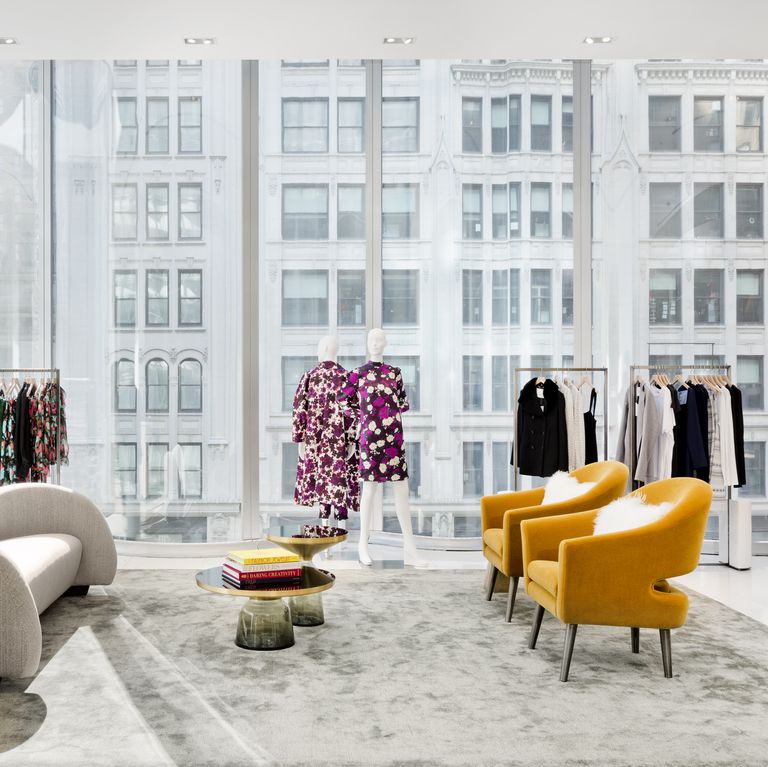
Here's another reason for both New Yorkers and out-of-towners to hit up the Central Park area: Nordstrom's new flagship store, located on 57th Street and Broadway, is a mere few blocks away from the NYC landmark. The 320,000 square-foot seven-story space boasts all your favorite brands and comes equipped with seven restaurants and bars.
To celebrate this momentous occasion, Nordstrom threw an exclusive party on Tuesday night for the fashion crowd. Guests like Maggie Gyllenhaal, Katie Holmes, Olivia Wilde, and Joan Smalls enjoyed light bites and drinks as they explored special in-store activations like bag customization stations and kid-friendly conveyor belt giveaways. Performers included Kitty Cash and DJ Lady Bunny, with a special encore by The Roots. If you weren't able to make it and had a slight pang of sadness on missing out, good news: The store is now officially open to everyone.
Check out some images from the flagship store, so you know what to expect before you head out the door. I will see you there because I am moving in.
The lower level is where you'll start your shopping journey:
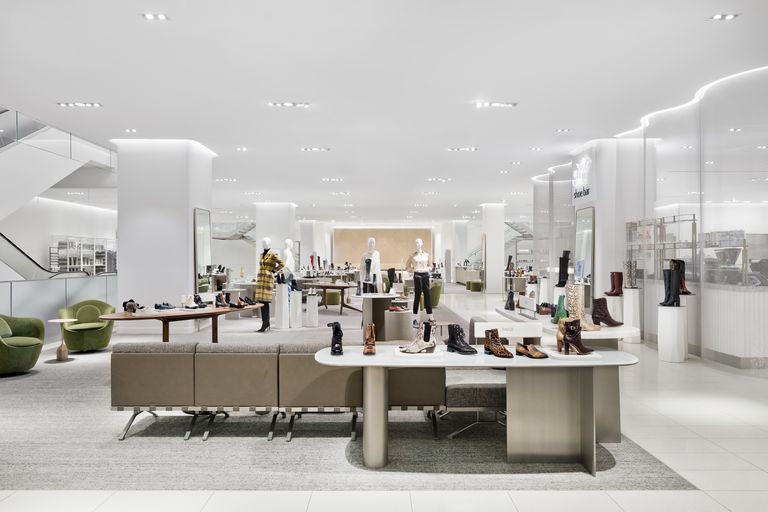
You'll find some of your beloved luxury brands when you wander around:
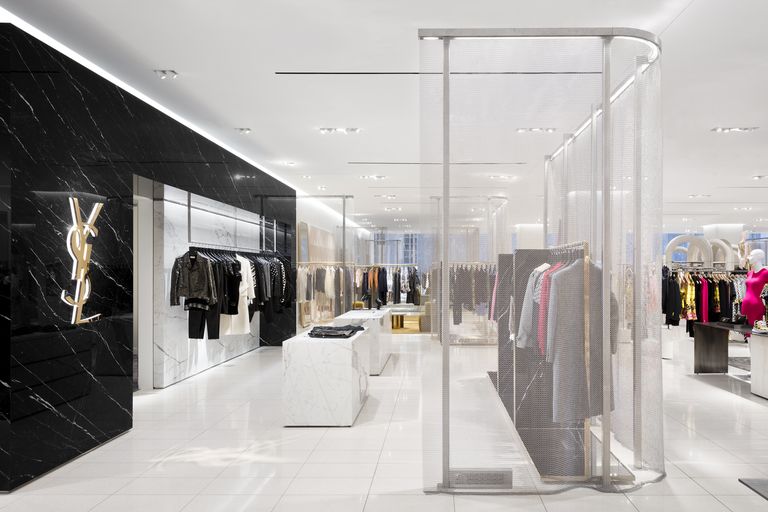
I am really into this sitting situation inside the Burberry concept space:

The Nike lounge is a must-visit:
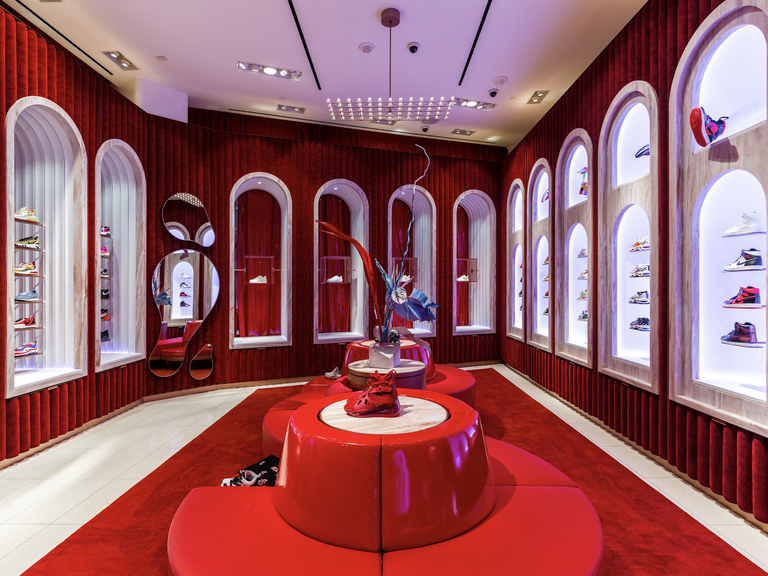
When you're tired from shopping, grab a bite or drink at one of the seven restaurants:

And, right across the street is Nordstrom Men's so your significant other doesn't feel left out. (Thanks for holding the bags, babe.)
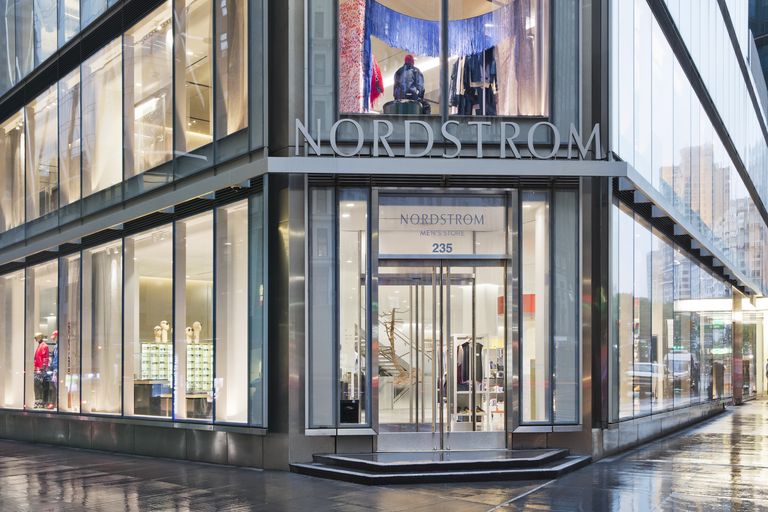
For more stories like this, including celebrity news, beauty and fashion advice, savvy political commentary, and fascinating features, sign up for the Marie Claire newsletter.
TECH
Esports tournaments facing huge cyberattack threats
Content Courtesy of: techradar.com
Written by:
Trend Micro research uncovers major threats facing esports industry

Security experts have warned that the global esports industry is facing a growing threat from hackers as its popularity booms around the world.
New research from Trend Micro has warned that as the sport becomes more lucrative, cybercriminals are attempting to target both professional and amateur players as well as affect the games themselves.
Esports has grown rapidly over the past few years to become a billion-dollar industry, with tournaments attracting thousands of fans to sold-out arenas across the globe.
- How esports are taking over the world
- Trend Micro: Why AI could be vital to your security future
- The best gaming VPN 2019
Gaming threats
Criminals have targeted esports for many years, but as the popularity increases, so have the number of attacks, Trend Micro found.
The firm found that the servers used by companies to host valuable gaming assets are a prime target for exploitation by hackers. Trend Micro found that as of July 25, 2019 there were 219,981 exposed gaming assets easily discoverable via a Shodan search.
The players themselves are also at risk, with criminals launching ransomware attacks to lock out top gamers from their accounts unless a ransom is paid (including some players shelling out up to $1000 in Bitcoin) and phishing malware deployed to steal account details along with financial record.
Trend Micro also warned that tournaments can be targeted with DDoS attacks, or servers targeted for maximum disruption to slow down gameplay and affect the reputation of certain companies or organisations.
All of this can also be tied in to the increasing popularity of illegal gambling on esports, with hackers able to affect the outcomes of tournaments to win big for criminal enterprises.
“If there’s one thing we know about malicious actors, it’s that they follow the money. Trend Micro has already observed nation state groups taking advantage of security gaps to target the gaming industry for financial gain, and we expect the same in esports,” said Jon Clay, director of global threat communications for Trend Micro.
“As esports becomes a billion-dollar industry, it’s inevitable that attackers will look to capitalise over the coming years. We predict the sector will experience the same kind of attacks as the gaming industry, but on a much larger scale, with financially motivated actors getting involved for monetary and geopolitical reasons.”
Stay safe online with the best antivirus software of 2019
Spotify launches a dedicated Kids app with curated playlists and playful art
Content Courtesy of: theverge.com
Written by:

Spotify is launching a new app called Spotify Kids that’s meant to provide a safe space for kids to explore and listen to music — and finally get “Baby Shark” out of their parents’ Discover playlists.
The app, which launches today in Ireland, includes around 6,000 tracks, all of which have been curated by editors at Spotify. For “younger kids,” the app will be limited to things like Disney soundtracks, songs about dinosaurs, and children’s stories. If parents set the app up for an “older kid,” then it will add pop hits from artists like Taylor Swift, Ariana Grande, and Bruno Mars.
Spotify editors are looking at more than whether a song contains foul language when determining if it’s an appropriate fit for this app. References to guns and violence, for example, could be disqualifying, too. Song selections will also change by region, with editors creating different playlists based on what’s popular in each area.

The app requires a Spotify Premium Family subscription, which costs $14.99 per month in the US (or €14.99 per month in Ireland). Partly, that’s because Spotify Kids won’t show ads, which is a feature exclusive to paying listeners. Each kid’s account will count toward one of the six total accounts allowed under the family plan.
Spotify has also created a separate privacy policy that it says is compliant with both GDPR and COPPA, the American online privacy law for kids. It won’t collect location data (region restrictions are based on whatever the parent’s account is set to), and parents can delete data associated with a kid’s account at any time. Spotify only saves data related to what songs a kid is playing and favoriting; it says that data will neither be sold nor shared with third parties for advertising purposes. Spotify may still share that data with third parties for select other purposes, though, like connecting Kids accounts to TVs. What Spotify can share is outlined in the privacy policy.
The app, available on both iOS and Android, looks like a streamlined version of Spotify, stripped back to just a single feed filled with colorful playlists. Kids are meant to poke around at recognizable movie characters and different illustrations that Spotify has made (like a smiling guitar or a bouncing bucket of popcorn) or tap on artists they recognize if they’re old enough. Kids can search if they want to find something specific, though they can’t browse by artist or album. The app is really just meant to be browsed through the curated playlists Spotify has put together. In a particularly cute touch, kids get to choose between one of 12 adorable monster avatars, and the color scheme of the app will change based on what they pick.

Spotify characterizes the initial launch of this app as a beta and says it’ll be rolling out to more markets over time. The company says it’s spent more than two years working on Spotify Kids and that it’s consulted with kids’ content experts along the way. The app is meant for kids between three and 10 years old.
For Spotify, the Kids app could offer a couple of big wins. For one, it makes the Family plan more valuable for parents who might already be considering splitting one between themselves. Beyond that, it’s also an early way to bring kids into the company’s ecosystem. There’s no way to move accounts between Spotify Kids and Spotify proper right now, but once kids are ready to move on from the children’s app, there’s really only one place to go — especially since they’re already on a family plan.
Once it’s available, the app seems likely to be a must-download for parents who already subscribe to Spotify. If you’re planning to let your kid poke around Spotify anyway to listen to Disney soundtracks, Spotify Kids gives them an easier, simpler, and more appropriate place to do that. And even if you don’t care about what they’re listening to, it’ll at least save your Spotify recommendations from being filled with kids’ songs.
Update October 30th, 8:15AM ET: Spotify clarified that third-party data is not shared for advertising purposes but may be shared for select other reasons. This article has been updated to reflect that.
CULTURE
HBO announces new Game of Thrones spinoff, House of the Dragon
Content Courtesy of: theverge.com
Written by:Julia Alexander
Based on Martin’s story about the Targaryens

"HBO has ordered a Game of Thrones spinoff, House of the Dragon, straight to series.
"The new prequel is written by Ryan Condal (Colony), with George R.R. Martin set to co-executive produce. The project is based on Martin’s 2019 book Fire and Blood, and is a history of House Targaryen (the ancestors of Daenerys) as they fight through a civil war. The 10-episode project is set 300 years before the events of Game of Thrones.
"HBO executive Casey Bloys made the announcement at an event for HBO Max, AT&T’s streaming service coming May 2020. The news comes just hours after news broke that HBO canceled a previously announced Game of Thrones spinoff series.
"It appears part of the reason HBO pushed forward with House of the Dragon is because the “established history penned by Martin to serve as a backbone for the story,” according to Entertainment Weekly. The other pilot only had some “vague references to build on.” The goal is to eventually have the events of the new series lead up to The Dance of the Dragons. It’s a major moment in the Seven Kingdoms history, leading to an all out civil war between two rival faction of House Targaryen.
"It’s unclear when House of the Dragon is expected to air.
Uber threatens to sue Los Angeles, as the fight over scooter data escalates
Content Courtesy of: theverge.com
Written by: Andrew J. Hawkins
LA wants Uber’s location data, but the ride-hailing company says it’s worried about privacy

The fight between the city of Los Angeles and scooter companies over location data is heating up. On Monday, Uber threatened a lawsuit against LA’s Department of Transportation (LADOT) pushing back against the requirement that scooter operators share anonymized real-time location data with the city.
The suit, which was first reported by CNET but has yet to be filed in LA Superior Court, centers on LADOT’s use of a digital tool called the mobility data specification program (MDS). The department created the tool as a way to track and regulate all of the electric scooters that are operating on its streets. MDS provides the city with data on where each bike and scooter trip starts, the route each vehicle takes, and where each trip ends. LADOT has said the data won’t be shared with police without a warrant, won’t contain personal identifiers, and won’t be subject to public records requests.
MDS HAS PROVEN CONTROVERSIAL WITH SCOOTER COMPANIES
Naturally, MDS has proven controversial with scooter companies, which have balked over having to share location data with the city. It’s growing into a bigger problem beyond LA. Cities such as Columbus, Chattanooga, Omaha, San Jose, Seattle, Austin, and Louisville are demanding scooter companies agree to share data through MDS as a condition for operating on their streets.
Uber, which owns the dockless scooter and bike company Jump, said MDS would lead to “an unprecedented level of surveillance” and vowed to stop it. It’s leaning on a recent analysis by California’s Legislative Counsel to make its argument. The counsel said MDS could violate the California Electronic Communications Privacy Act, which was signed into law in 2015.
In August, Uber and Lyft sent a letter to California Attorney General Xavier Becerra, in which the companies argued that LADOT was exceeding its authority with MDS.
“While we support the creation of a global standard for data-sharing for local municipalities, it appears that certain city MDS requirements may be in violation of CalECPA,” the companies wrote. “We have repeatedly raised concerns directly with these municipalities throughout the development and implementation of MDS, and yet they continue to require the MDS as a condition of our operating permits.”
In a statement, Uber said that it has exhausted its options and had “no choice” but to sue the city.
“Jump riders in Los Angeles have a reasonable expectation of privacy in the trip data created from riding on our bikes and scooters. Independent privacy experts have clearly and repeatedly asserted that a customer’s geolocation is personally identifiable information, and - consistent with a recent legal opinion by the California legislative counsel - we believe that LADOT’s requirements to share sensitive on-trip data compromises our customers’ expectations of data privacy and security. Therefore, we had no choice but to pursue a legal challenge, and we sincerely hope to arrive at a solution that allows us to provide reasonable data and work constructively with the City of Los Angeles while protecting the privacy of our riders.”
A spokesperson for LADOT did not immediately respond to a request for comment. In an interview with The Verge on September 9th, LADOT director Seleta Reynolds said that the city “encoded” privacy protections into the regulations in order to give them “the force of law.”
She added that it’s a “Day One job and a forever job” of city officials to make sure that the “open source tools that we build do not become tools that people can use to invade the privacy of others.”
Updated October 29th, 3:01PM ET: “LADOT has the responsibility to manage the public right-of-way, ensuring safety and access for everyone,” a spokesperson said in a statement. “To be effective, the department requires reasonable information about the tens of thousands of shared vehicles operated by transportation technology companies that use our streets for profit. While all other permitted scooter and bike companies are complying with our rules — Uber has repeatedly refused. LA’s requirements have been clear since last November, and Uber agreed to abide by them. By 5 pm Tuesday, we expect Uber to come into compliance or they will face suspension proceedings, which could eventually lead to revocation of their permit.”
Updated October 30th, 9:04AM ET: Given that Uber has yet to file its lawsuit, the headline to this story has been changed to indicate that Uber is just threatening to sue Los Angeles.
ADVERTISING
Snapchat now lets you 3D Paint faces and pretty much anything else
The feature is rolling out starting today
Content Courtesy of: theverge.com
Written by: Jon Porter
Today, Snapchat is introducing a new 3D Paint feature that lets you draw in augmented reality. You can use it to draw on your own face using your phone’s front-facing camera, and it’ll also work with your rear-facing camera to let you to draw on objects in the environment. One video produced by Snap shows the feature being used to draw a pair of eyes and a mustache on the front of a van.
The functionality looks similar to Samsung’s “AR Doodle” feature which it introduced with the Galaxy Note 10. However, Samsung’s feature has the added benefit of using the phone’s S Pen stylus, which should be more precise than drawing with your finger on the screen.
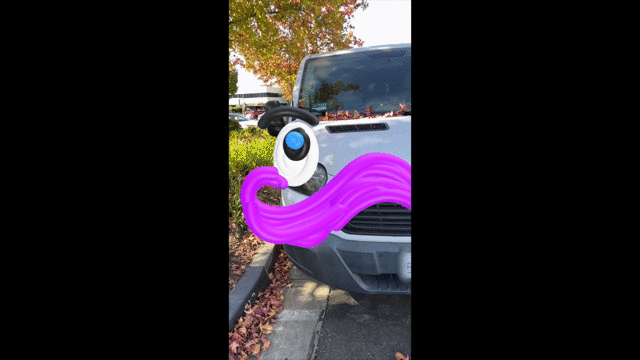
If you want to give the feature a go yourself, then Snapchat’s 3D Paint is rolling out starting today. You’ll be able to find the feature within the Create section of the iOS app’s AR Bar. Unfortunately, the feature isn’t available on Android at launch, but Snapchat says that it will be coming to the platform in the coming months.
REESE'S PROMISING INTERACTIVE HAUNTED HOUSE WAS NO TREAT
Content Courtesy of: adage.com
Written by:
Jawline A first-person account from inside awkward 'It's A Live:' Not even Neil Patrick Harris could save me

Halloween is the biggest holiday for Reese’s, not to mention parent company Hershey Co. In years past, Reese’s has crafted interactive events, like a vending machine where people could exchange Halloween candy for its peanut butter cups, to drive holiday engagement.
This year, Reese’s opted for another interactive experience—this time a live one, which Reese's described as "the most epic Reese’s Halloween treat experience to date.”
Reese’s nabbed actor Neil Patrick Harris to host “It’s A Live,” a Facebook Live event that streamed Oct. 24. The concept was promising: Harris would guide the paths of 32 selected guests through a haunted house based on real-time viewer votes. Those guests would have to find a key to escape two fright-filled rooms—a combination of “Sleep No More” meets haunted house meets escape room.
Unfortunately, the execution—created with Matador Content, CAA and Facebook Creative Shop—produced more laughs and awkward moments than scares. Even Reese’s admits the event did not go according to plan.
Reese’s began promoting the event in early October. Harris posted 11 videos to Facebook, as well as an IGTV video, hyping the event and asking fans what elements would be scariest to confront in the haunted house.
I participated as one of three media members—appearing at approximately the 36-minute mark in the Facebook Live video. Watch the hour-long video (if you can stomach it), and decide for yourself:
Prepping backstage
At the taping studio in Greenpoint, Brooklyn, participants, mostly influencers, are placed in groups of four. Media members are grouped together. Production people secure phones, have us sign waivers, distribute whistles (if we need rescuing) and blindfold us. We are brought backstage until told we can remove our blindfolds and enter the room with a blinking light.
The entrance
We step into a smoky hallway. There is no room with a light. An awkward minute passes before we finally see a light and head toward it.
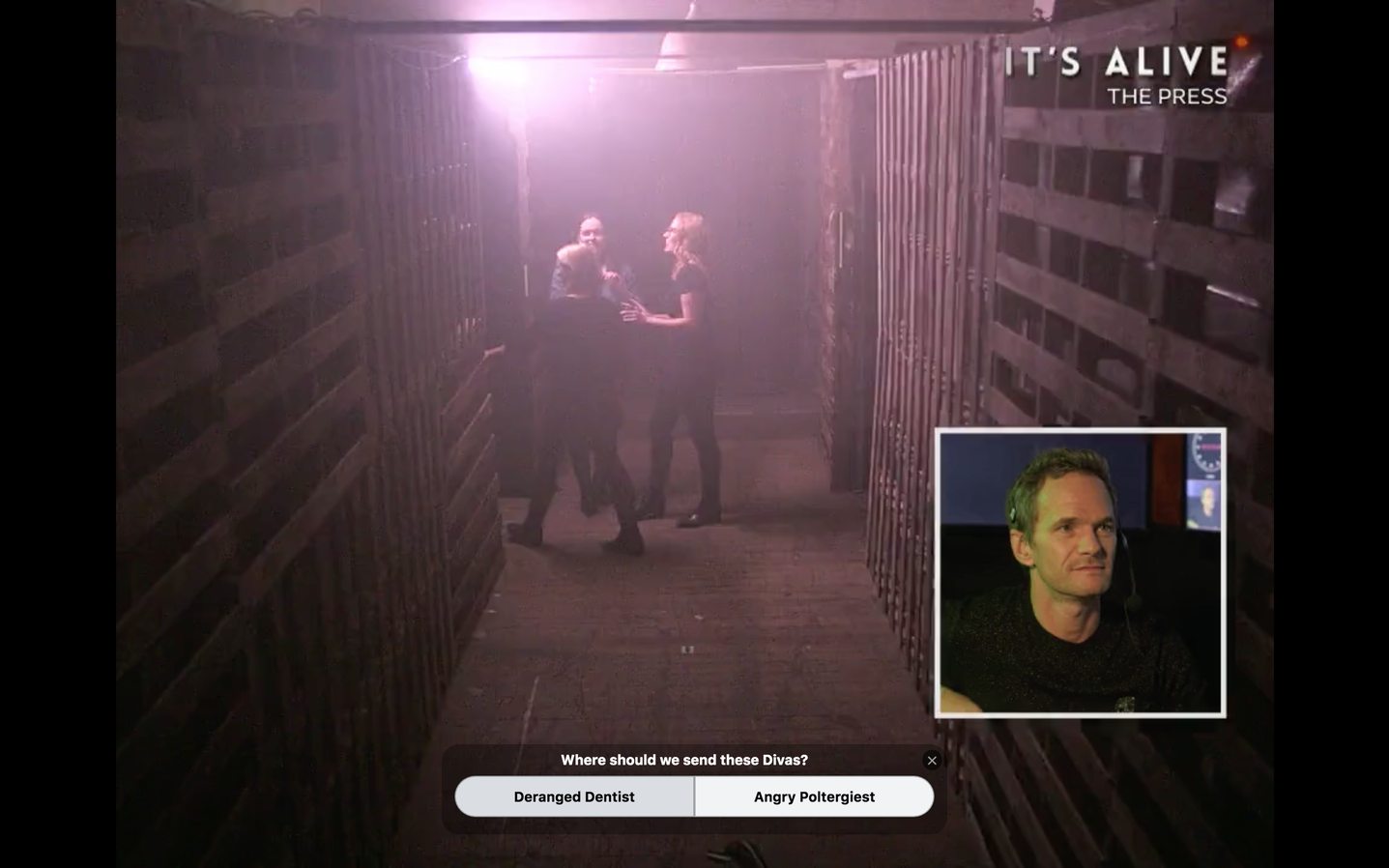
Credit: Reese's "It's A Live" Facebook live
The experience
In the room we encounter actors costumed as ghoulish, bloody grandmas and grandpas, who begin hollering and encircling us.
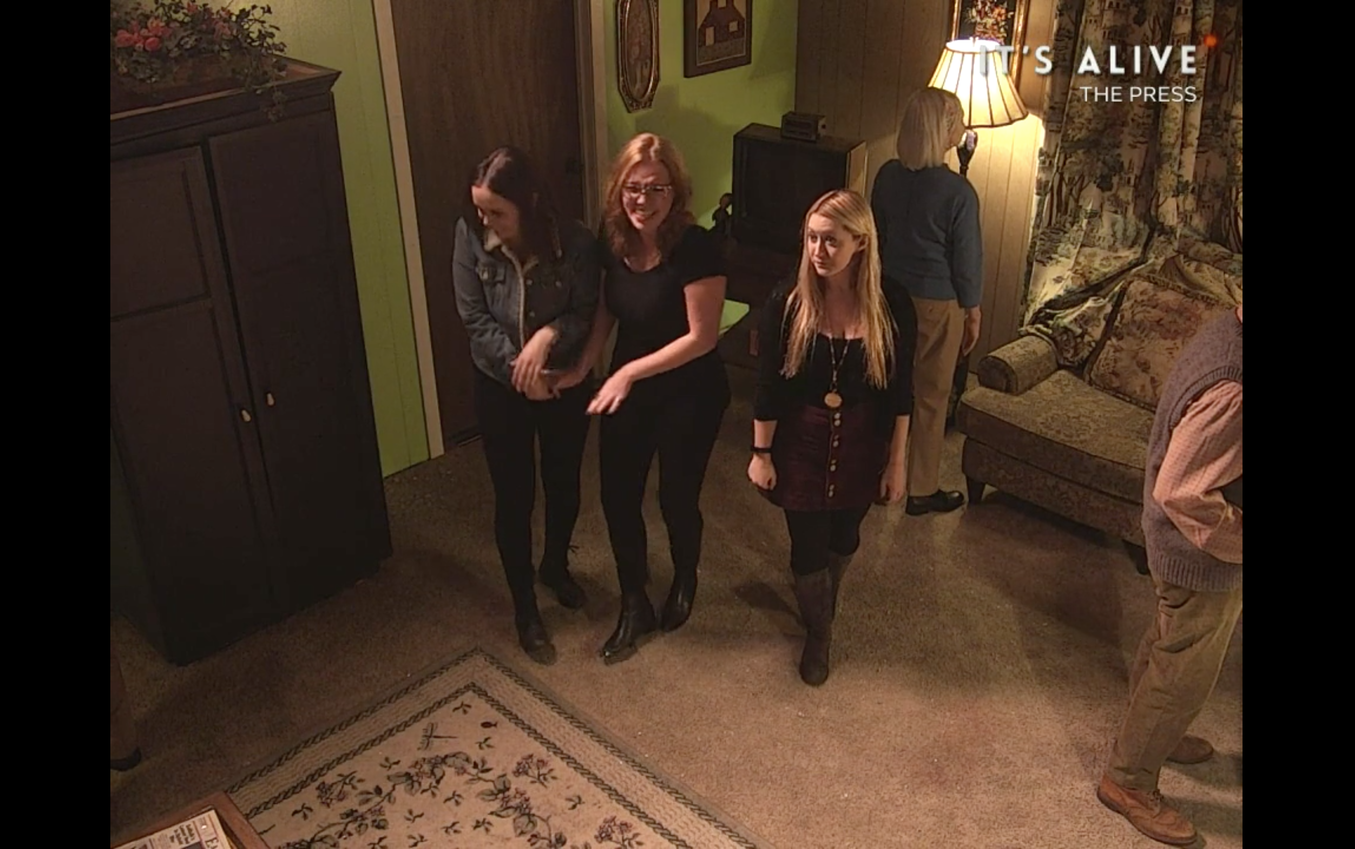
Credit: Reese's "It's A Live" Facebook live
They bark at us to lie down and we reluctantly do as we’re told. Lights flash as the actors, shrieking and spouting nonsense, pretend to be grabbing us. Then they hesitate, uncertain what to do next. It was obvious there was no script for this.
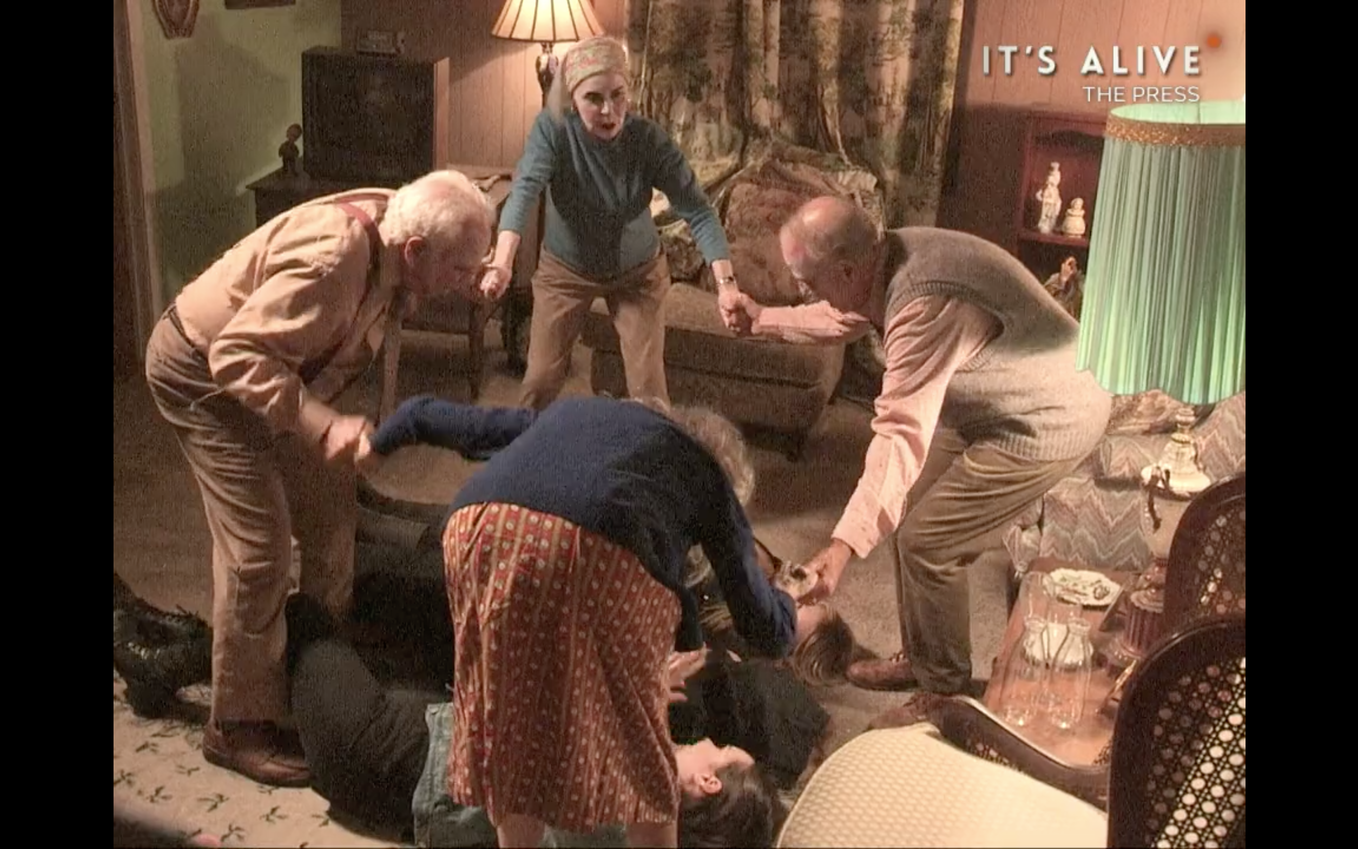
Credit: Reese's "It's A Live" Facebook live
As we lay on the floor surrounded by seniors in too much makeup, Harris was in the control room, trying to control his laughter. “Someone give them a key, please," he pleads in the Facebook Live video. We are told to leave as the actors stare after us, utterly confused about what they are supposed to do.
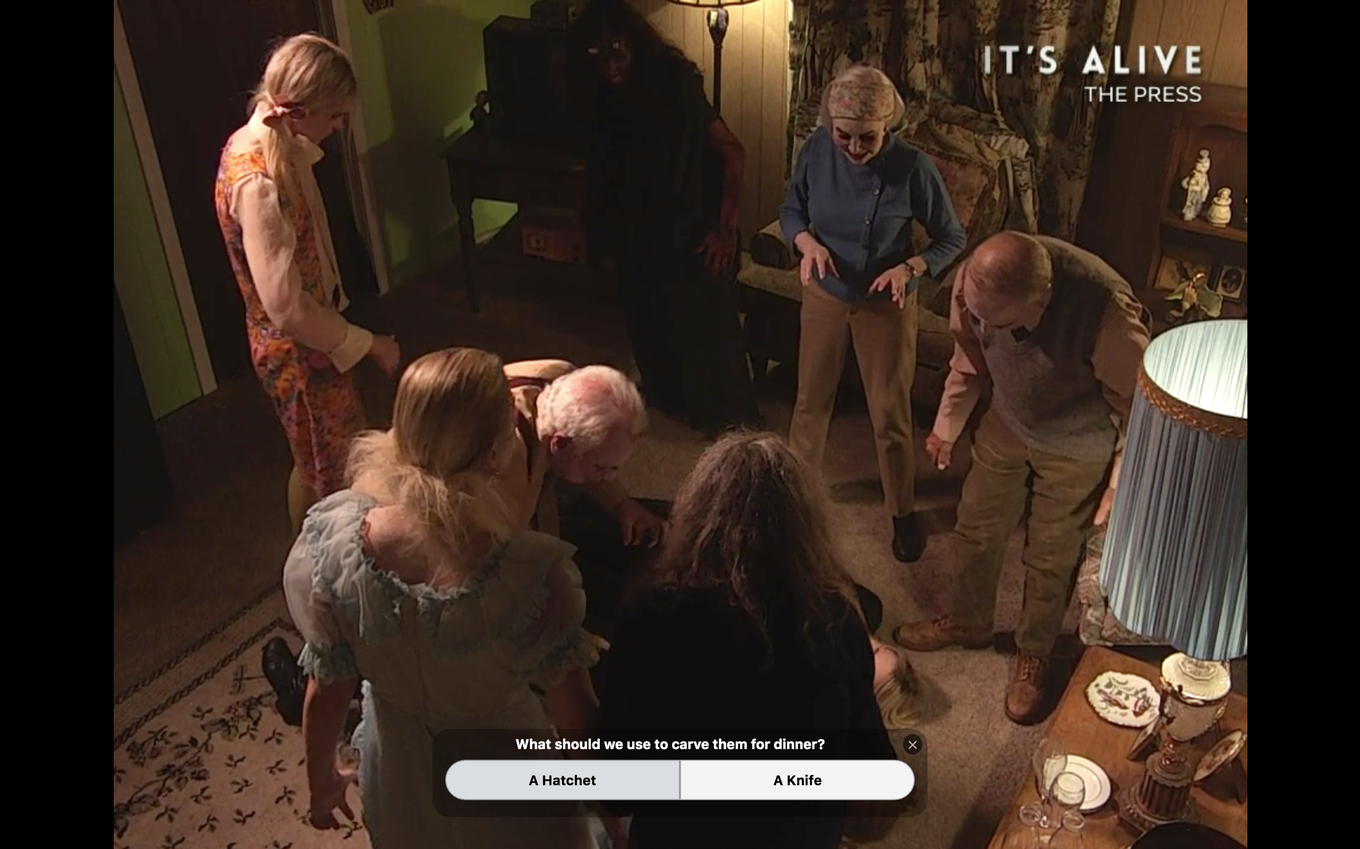
Credit: Reese's "It's A Live" Facebook live
In the Facebook Live video, Harris has an incredulous look on his face. He tries to stifle a laugh and apologizes for our experience. I hope someone gave Harris a head’s up that the live event wasn’t going to be perfect. “Ok, that’s a little creepy … not scary though,” one viewer comments on the live feed. From another: “I would be 'Hell no, I am not laying down!'”
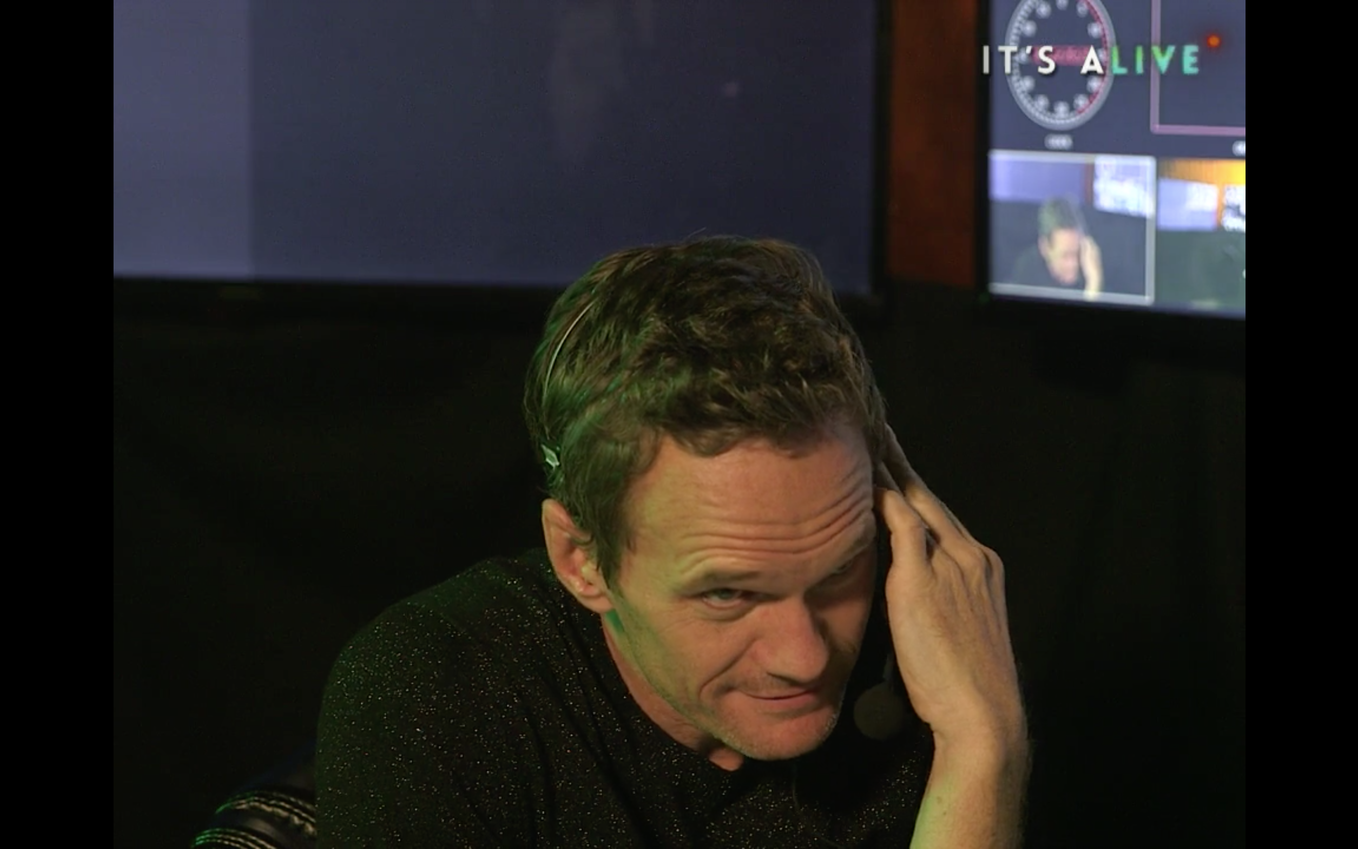
Credit: Reese's "It's A Live" Facebook live
“Couple things,” Harris tells the camera. “That [room] was apparently cut and not rehearsed; so glad the media saw that … Huh, boy. You know what, we’re just going to send them straight to the treat suite because all we did was torment and traumatize them, and have old people yell at them which is horrible for many, but a lot of the scares that were supposed to happen, did not.”
The treat suite
We bypass other rooms and are brought to the Reese’s treat room, where a woman offers a tray of Reese’s cupcakes. We are perplexed. We went through only one room? Did we do something wrong?
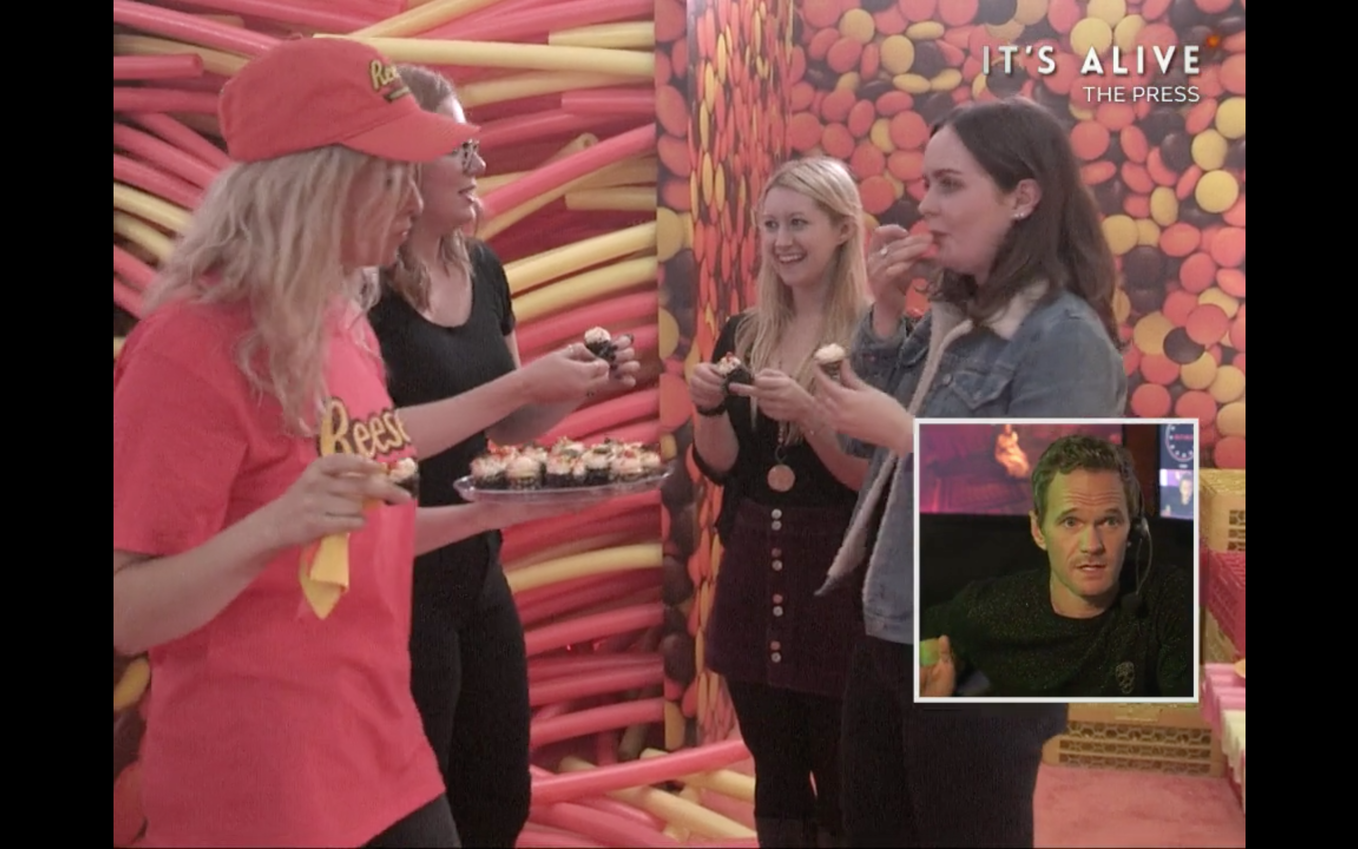
Credit: Reese's "It's A Live" Facebook live
“On the video, Harris continues: “Anyone in the media who is watching, this is our beta test. We are seeing how this goes, and every room is different. And yeah, sure, sometimes there’s a key, and yeah, sure, sometimes you’ll have to lie/lay on the ground, and have people just scream at you for a minute or two. But boy, what work we put into it as a whole, as a larger piece of entertainment, so thank you for coming and if any of you need a one-on-one interview afterward, I’m happy to give you an exclusive. We can talk about my Halloween costume for the family.””
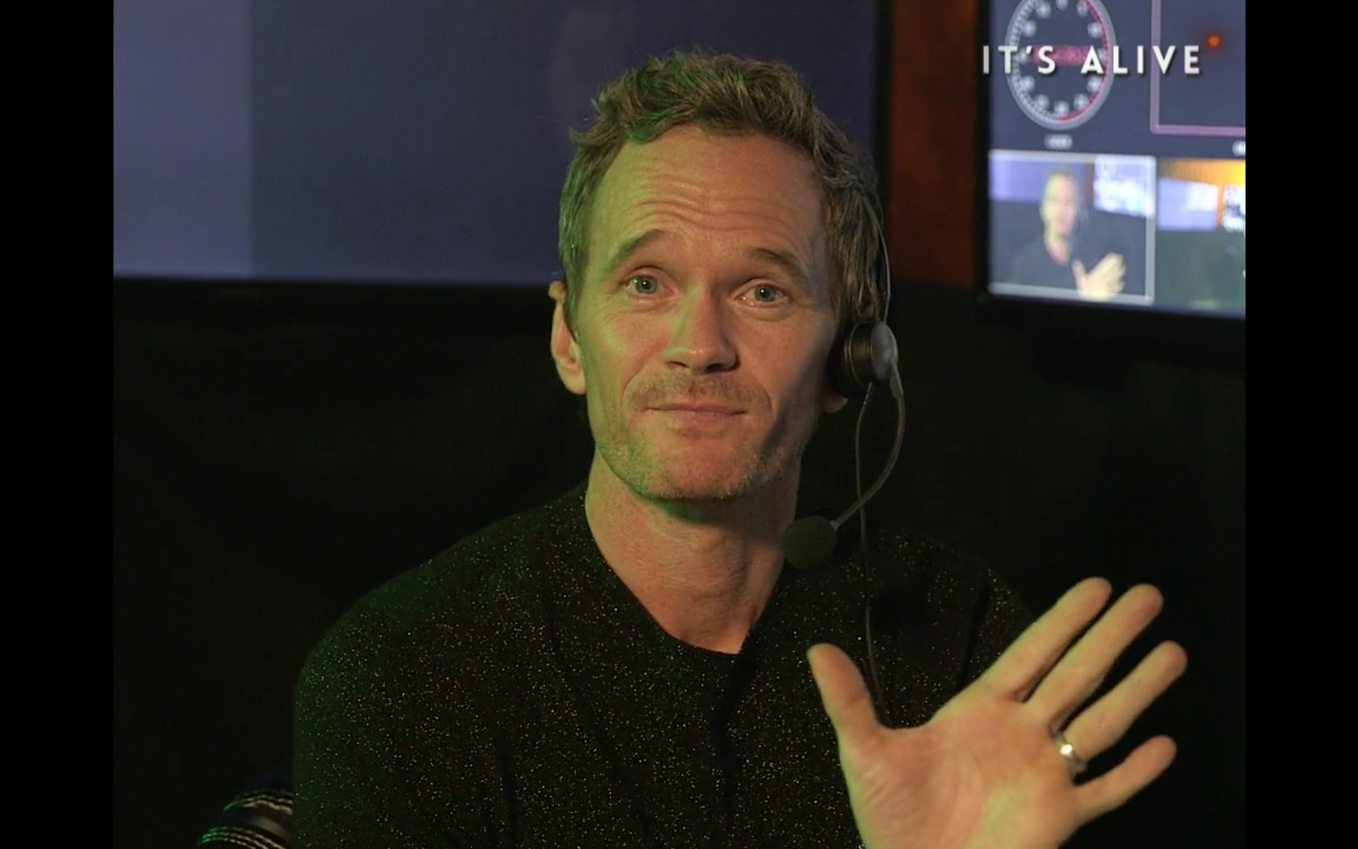
It's clear we weren’t the only group that felt shortchanged, although there were more screams from other rooms in the haunted house, which included a dentist's office and a séance. Harris, who did his best to brush off slipups, seemed to struggle keeping track of the groups.
The event also began 16 minutes late, the videography at time was poor, and some viewer suggestions—such as which weapons the actors should carry—were not implemented.
“We are always game for trying new experiences. And sometimes when you try something new, you have hiccups,” Anna Lingeris, earned media and brand publicity lead for Hershey Co. said on Friday.
“Neil said it last night; the experience didn’t go as planned. But the one thing we know is that everyone, including the participants and cast, had a great time in the Treat Suite. It was clear to us that no matter how scared people may have been, Reese’s—at the end—made it better.”
The engagement on the live video—21,000 views, 675 reactions, 1,505 comments and 189 shares—was low, considering Neil Patrick Harris has nearly 3 million followers on Facebook.
MILLER LITE’S NEW CAMPAIGN ASKS PEOPLE TO UNFOLLOW IT ON SOCIAL MEDIA
Written by: E.J. Schultz
Content Courtesy of: adage.com/
The brew plugs itself as ‘the original social media’ in new effort from DDB Chicago
Miller Lite is the latest brand trying to tap into social media addiction. But the brew is going further than most, making a plea for drinkers to unfollow it on Instagram and Facebook.
As part of a new campaign in which it plugs itself as “the original social media,” Miller Lite says it will give a free beer to people who prove they have unfollowed the brand by texting a screenshot to a designated number detailed at www.unfollowmillerlite.com. (Because of state alcohol regulations, not all consumers are eligible for the giveaways.)
The campaign by DDB Chicago includes a TV spot that dramatizes the “follow” culture by showing two men and one woman being chased in real life by packs of people, including some armed with annoying selfie-sticks. The spot, shot in black-and-white, ends with the people finding a safe haven in a bar, with the kicker: “A few friends are better than a few thousand followers. Here’s to the original social media.”
Miller Lite, which has 119,000 Instagram followers and just over 2 million on Facebook, will also go “dark” on social media, taking a two-week break from posting there. In a news release, the brand says the effort is a way to reimagine its classic “It’s Miller Time” slogan.
“We know that today’s generation of new drinkers will spend more than five years of their lifetime on social media, and yet are only meeting up with their close friends less than a few times a month,” Anup Shah, VP of the Miller family of brands, stated, referencing data from a study the brand commissioned from YouGov. “By reintroducing Miller Time, we want to remind them that while social media is great, it’s no replacement for hanging out in-person over a Miller Lite.”
Miller Lite’s ad marks a significant creative pivot for the brand, which had been running ads under the “Hold True” tagline that emphasized product attributes, like its low-calorie count. The new campaign is the latest move by MillerCoors Chief Marketing Officer Michelle St. Jacques, who assumed the role earlier this year, to shift the brewer’s advertising into more newsy terrain by tapping into cultural trends.
Miller Lite is now following the same playbook as multiple other brands that have attempted to stand out by making a statement against social media addiction.On Monday, HP debuted a campaign by Goodby Silverstein & Partners that warns against digital addiction by highlighting facial filters, emoji conversations and other digital distortions that have replaced real conversation.
Last year, Coca-Cola Co.’s Vitaminwater ran a contest encouraging consumers to give up their smartphones for a year to win $100,000. Stella Artois, meanwhile, imagined a bar where no one used a phone, with an ad last year that began a new tagline, "Joie de Bière," which amounts to a bar-friendly twist on the French phrase "joie de vivre" that means joy of living.
Of course, marketers continue to spend billions of dollars on digital advertising, so most brands don’t seem to be putting their money where their mouths are.












